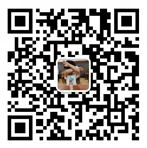Adjustment method of bearing clearance
After installation, the clearance of non adjustable bearings is mainly affected by the fit. Therefore, the bearing following mainly introduces the clearance adjustment method of adjustable bearings, taking tapered roller bearings with wide speed range and bearing axial force and radial force at the same time as an example.
push pull method
Push pull method is generally used for positive clearance, and the axial clearance between bearing raceway and rolling element can be measured. Apply a force to the shaft or bearing pedestal in one direction. After pushing to the bottom, set the dial gauge to zero as a reference, and then apply a force in the opposite direction. After pushing to the bottom, the rotation of the pointer on the dial gauge is the clearance value. During the measurement, the roller shall be vibrated and rotated slowly to ensure that the roller is correctly positioned on the large retaining edge of the inner ring.

The theoretical basis is Hooke's law. The shape variable of an elastically deformed object is directly proportional to the external force. Under the action of certain installation force, measure the clearance of gasket or spacer to obtain the correct clearance. Directly read out the correct gasket or spacer size required according to a chart created during the previous test.
This method is suitable for positive clearance and preload, and operators need to be trained to create charts.
Under preload, the increase of bearing rotational torque is a function of bearing preload. The experimental results show that for a group of new bearings of the same model, the variation of bearing rotational torque is very small under the condition of given preload. Therefore, the rotational torque can be used to estimate the preload.
The principle of this method is to establish a conversion relationship between the bearing rotating torque and preload of the bearing, which needs to be obtained through testing. Then, during the actual installation, the thickness of the gasket can be determined by measuring the rotating torque.












